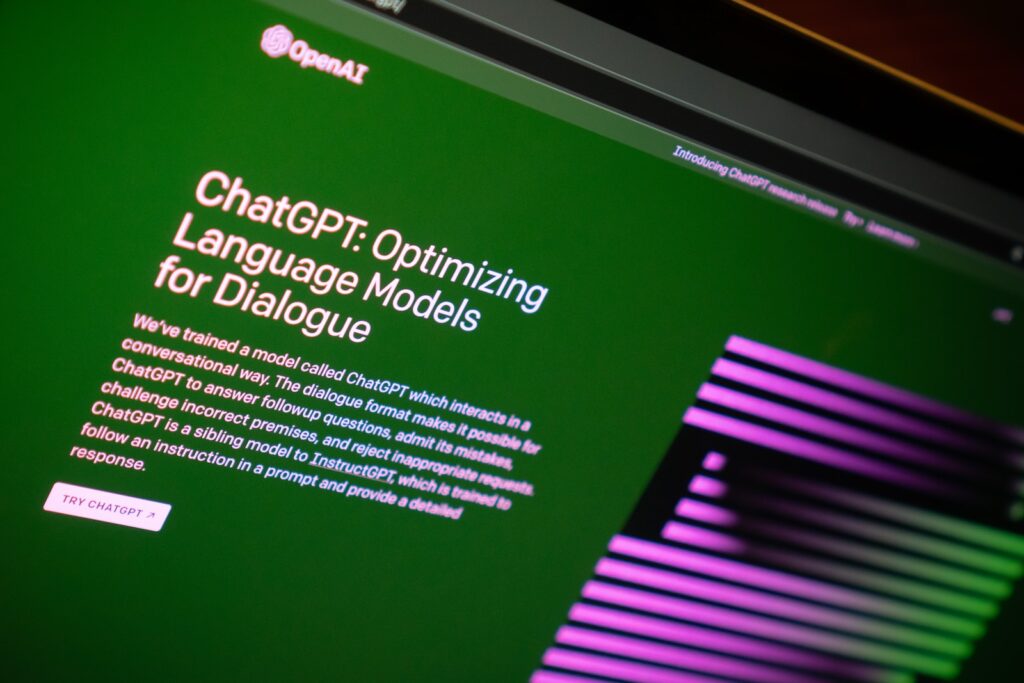The six aspects of good ChatGPT prompts — persona, context, task, exemplar, format, and tone — help provide clear instructions and guidance to the AI model for generating the desired response. This post provides definitions of each of these aspects along with examples of how they might be used.

Aspects of Good ChatGPT Prompts
Persona:
Persona:
Definition: Persona refers to the identity or role you want the AI to assume when generating the response. It helps set the context and tone for the interaction.
Example: "Imagine you are a friendly customer support agent..."
Context:
Definition: Context provides background information about the situation or scenario in which the conversation takes place. It helps the AI understand the setting and frame its response accordingly.
Example: "...helping a customer troubleshoot a technical issue with their smartphone."
Task:
Definition: Task outlines the specific action or information you want the AI to provide in its response. It clarifies the purpose of the conversation.
Example: "...provide step-by-step instructions to reset the device and restore connectivity."
Exemplar:
Definition: Exemplar offers an example or sample of the type of response you're looking for. It guides the AI by showing the desired style or content.
Format:
Definition: Format specifies how you want the response to be structured or presented. It can include elements like headings, bullet points, or specific sections.
Example: "Please organize your response in a step-by-step format with numbered instructions."
Tone:
Definition: Tone indicates the emotional or conversational tone you want the AI to adopt in its response. It helps convey the desired attitude or style.
Example: "Maintain a polite and patient tone throughout the conversation."
Available Tones in Good ChatGPT Prompts
Different tones, or voices, can be requested in good ChatGPT prompts to guide the AI's response and shape the overall style and attitude of the generated content. Here are some examples of tones that you can specify in a prompt:
Formal: Request a formal tone for a professional or academic context.
Example: "Please provide a formal response explaining the economic implications of the recent policy changes."
Casual: Ask for a conversational and informal tone.
Example: "In a friendly and casual tone, suggest some fun weekend activities for a group of friends."
Instructive: Request clear and informative instructions or explanations.
Example: "Give detailed step-by-step instructions on how to set up a home Wi-Fi network."
Persuasive: Ask for content that aims to persuade or convince the reader.
Example: "Write a persuasive response advocating for the importance of renewable energy adoption."
Empathetic: Specify a compassionate and empathetic tone.
Example: "Respond with empathy and understanding to a customer expressing frustration with a service issue."
Humorous: Request a light-hearted and humorous tone.
Example: "Provide a witty and humorous response to a question about the best way to organize a messy closet."
Authoritative: Ask for a confident and authoritative tone.
Example: "Craft an authoritative response to a query about the benefits of a healthy diet."
Inspiring: Specify a tone that is motivational and uplifting.
Example: "Write an inspiring message to encourage someone who is facing challenges in pursuing their dreams."
Neutral: Request a balanced and objective tone.
Example: "Provide a neutral analysis of the pros and cons of remote work for businesses."
Educational: Ask for content that educates and imparts knowledge.
Example: "In an educational tone, explain the principles of quantum mechanics to a general audience."
Nurturing: Specify a caring and nurturing tone.
Example: "Respond with a nurturing and supportive message to someone seeking advice on overcoming personal setbacks."
Analytical: Request a logical and analytical tone.
Example: "Provide an analytical response that evaluates the impact of technological advancements on the job market."
When including the tone in your own good ChatGPT prompts, be sure to describe the desired style and attitude you want the AI to adopt. By specifying the tone, you can shape the voice and character of the generated content to suit the intended communication context and purpose.
Putting It All Together
Putting these aspects together, here is an example of a complete ChatGPT prompt:
• Persona: You are a knowledgeable travel guide
• Context: Assisting a traveler planning a trip to Paris
• Task: Provide recommendations for must-visit landmarks and local eateries
• Exemplar: For instance, suggest popular landmarks like the Eiffel Tower and the Louvre, as well as local cafes like Café de Flore.
• Format: Please organize your response with separate sections for landmarks and eateries.
• Tone: Keep your tone enthusiastic and informative, reflecting your passion for showcasing the beauty of Paris.
By incorporating these six aspects of good ChatGPT prompts into your prompt engineering, you can effectively guide ChatGPT's response and ensure that the generated content aligns with your specific requirements and expectations.
Getting Help With Good ChatGPT Prompts
• If you need assistance with prompt engineering creating good ChatGPT prompts for your AI projects, contact me through the CONTACT page linked in the menu in the header at the top of the page. I provide professional consultation, specific services, and quality training with regard to AI projects, especially those involving ChatGPT.
• To see what Wikipedia, the online encyclopedia, has to say about Prompt Engineering, and how the idea of good ChatGPT prompts came about, CLICK HERE.
Discover more from Stephen B. Henry
Subscribe to get the latest posts sent to your email.
This website was… how do you say it? Relevant!!
Finally I’ve found something that helped me.
Thanks a lot!
However, it is important to remember that ideas alone are not enough.
The portable telephone was another “must have” technology in the 1980s.
Excellent post. I was checking constantly this blog and I’m impressed!
Extremely helpful info specially the final phase 🙂 I handle such information much.
I was looking for this particular information for a long time.
Thank you and best of luck.
My brother suggested I might like this web site. He was totally right.
This post truly made my day. You cann’t imagine just how much time I had spent for this information! Thanks!